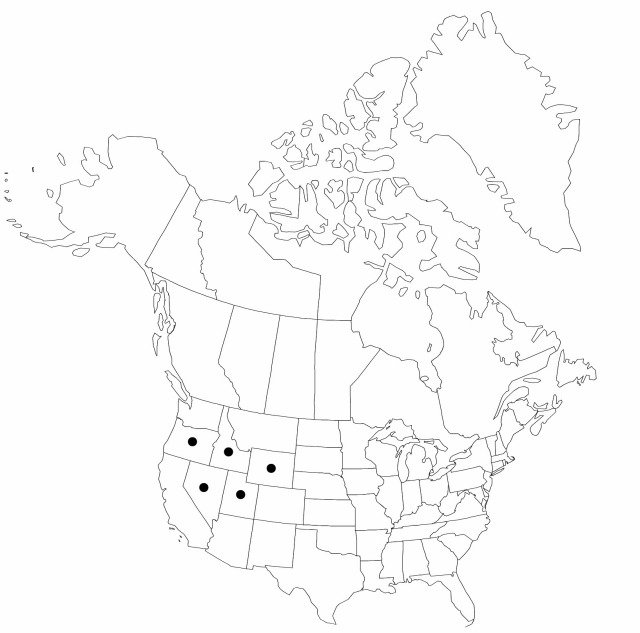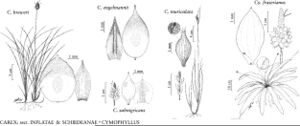Difference between revisions of "Carex subnigricans"
Leafl. W. Bot. 2: 167. 1939.
imported>Volume Importer |
imported>Volume Importer |
||
| Line 56: | Line 56: | ||
|publication year=1939 | |publication year=1939 | ||
|special status=Illustrated;Endemic | |special status=Illustrated;Endemic | ||
| − | |source xml=https:// | + | |source xml=https://bitbucket.org/aafc-mbb/fna-data-curation/src/2e0870ddd59836b60bcf96646a41e87ea5a5943a/coarse_grained_fna_xml/V23/V23_1093.xml |
|genus=Carex | |genus=Carex | ||
|section=Carex sect. Inflatae | |section=Carex sect. Inflatae | ||
Latest revision as of 20:38, 5 November 2020
Rhizomes 1–1.5 mm thick. Culms 5–20 cm, 2–2.5 mm thick at base. Leaves: sheaths to 13 cm, fronts uniformly colorless or pale brown; blades with inconspicuous median groove, not flattened, terete in cross section, 5–12 cm × 0.4–10 mm, lacking conspicuous air cavities. Inflorescences 0.7–2 cm × 4–6 mm, staminate portion to 5 mm. Pistillate scales yellow-brown medially, 1-veined, equaling perigynia in width, usually shorter, apex obtuse or acute, not inrolled, awns absent. Anthers 1.5–2 mm. Perigynia veinless, stipitate, elliptic, 2.5–3.5 × 1.5 mm, tightly enclosing and distended by achene, base narrowly cuneate, apex acute; beak erose; rachilla shorter than fruit. Stigma 1.5–2.5 mm. Achenes sessile.
Phenology: Fruiting Sep.
Habitat: Moist rocky slopes, alpine meadows
Elevation: above 2500 m
Distribution

Idaho, Nev., Oreg., Utah, Wyo.
Discussion
Selected References
None.
